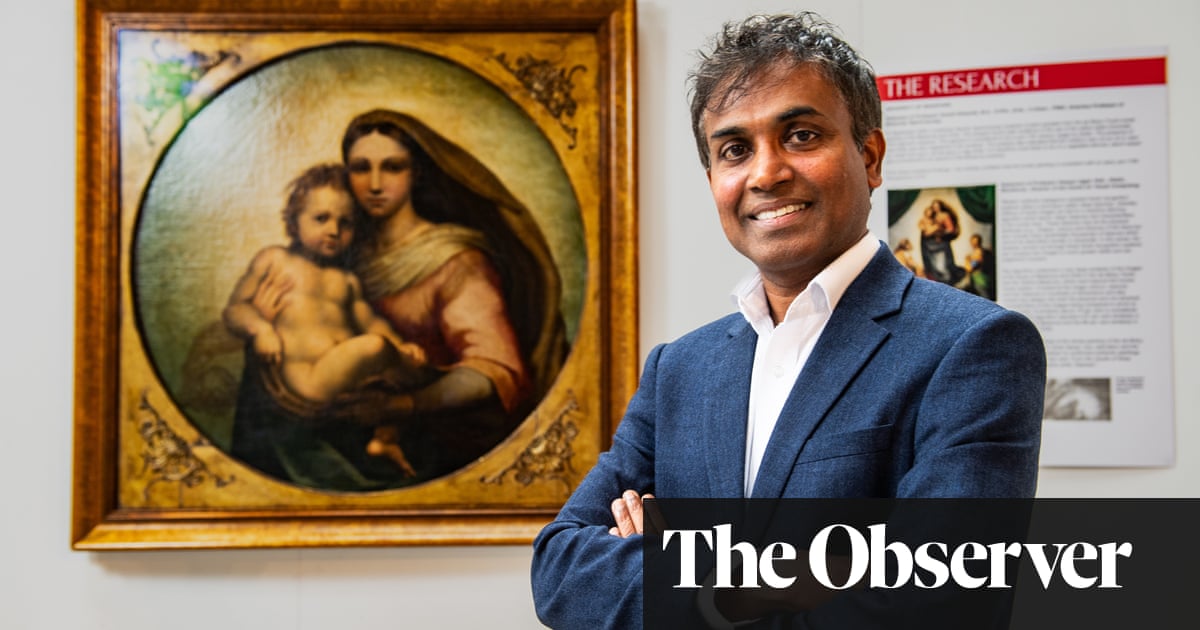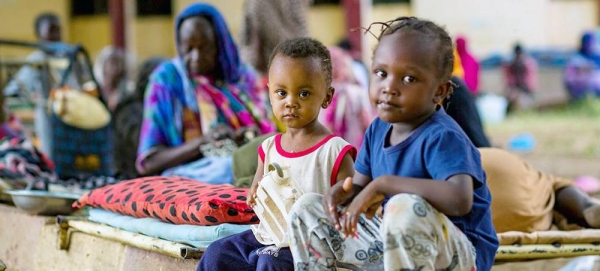
Authenticating works of art is far from an exact science, but a madonna and child painting has sparked a furious row, being dubbed “the battle of the AIs”, after two separate scientific studies arrived at contradictory conclusions.
Both studies used state-of-the art AI technology. Months after one study proclaimed that the so-called de Brécy Tondo, currently on display at Bradford council’s Cartwright Hall Art Gallery, is “undoubtedly” by Raphael, another has found that it cannot be by the Renaissance master.
In January, research teams from the universities of Nottingham and Bradford announced the findings of facial recognition technology, which compared the faces in the Tondo with those in Raphael’s Sistine Madonna altarpiece, commissioned in 1512.
Having used “millions of faces to train an algorithm to recognise and compare facial features”, they stated: “The similarity between the madonnas was found to be 97%, while comparison of the child in both paintings produced an 86% similarity.”
They added: “This means that the two paintings are highly likely to have been created by the same artist.”
But algorithms involved in a new study by Dr Carina Popovici, a scientist with Art Recognition, a Swiss company based near Zurich, have now returned an 85% probability for the painting not to be painted by Raphael.
The Tondo was bought in 1981 by the Cheshire businessman George Lester Winward, who built up a collection of art spanning the 16th to 19th centuries. In 1995, two years before he died, he set up the de Brécy Trust Collection, named after his French ancestors, to preserve his collection and make it available to scholars for study.
The painting has been subjected to extensive examinations and historical research over more than 40 years.
In July, Prof Hassan Ugail, director of the Centre of Visual Computing at the University of Bradford – who developed the AI facial recognition system – said: “My AI models look far deeper into a picture than the human eye, comparing detail such as the brushstrokes and pigments.
“Together with my previous work using facial recognition and combined with previous research by my fellow academics, we have concluded the Tondo and the Sistine Madonna are undoubtedly by the same artist.”
Prof Christopher Brooke of the University of Nottingham and an historian of ecclesiastical art, said then: “This study demonstrates the capabilities of machine learning to give a probability of the same artist between different ‘Old Master’ paintings. In this case study, direct facial comparison comes out at a match of 97% – a very high statistical probability that the artworks are by identical creators.”
Analysis of the pigments was also said to have placed it firmly in the Renaissance period.
Popovici, however, was taken aback to discover that her study’s results “clearly contradicted” their analysis so dramatically.
Art Recognition has an ongoing collaboration with Tilburg University in the Netherlands and its research was recently published by Springer, the academic publishers. It has analysed more than 500 works, including a painting by Rubens in the National Gallery – A View of Het Steen in the Early Morning – which came out with a probability of 98.76% in favour of the artist.
A spokeswoman for Bradford council, in whose building the painting is hanging, joked: “It’s the battle of the AIs, I guess.”
Sir Timothy Clifford, a leading scholar of the Italian Renaissance and former director general of the National Galleries of Scotland, was intrigued to hear of science’s conflicting findings: “I do feel rather strongly that mechanical means of recognising paintings by major artists are incredibly dangerous.
“I’ve never contemplated the idea of using these AI things. I think they’re terribly unlikely to be remotely accurate. But how fascinating.”
On being shown a small photograph of the Tondo, he suggested that it was an extremely faithful copy of one of the most famous pictures in the world: “There must be hundreds and hundreds of very good copies of it. My immediate reaction would be that it was possibly French, early 19th century, a good copy – about the time probably that the picture I’m sure would have travelled with Napoleon’s booty perhaps to the Louvre.
“Many of the pigments that were being used in 1810 were the same pigments that were being used in 1510. Unless one or two of those are being used, which shouldn’t have been used, it’ll come up very much the same way.”
Michael Daley, director of ArtWatch UK, the museums and galleries watchdog, said: “It’s very good that Carina Popovici has found against it. Its only claim, as I understand it, is that there’s a perfect correspondence with the design of the Sistine Madonna.
“But, if Raphael himself had made another version, he’d almost undoubtedly have introduced modifications or deviations of his own to the painting. It is almost certainly 19th century.”
On being told of the contradictory study, Ugail said that, without seeing its details, it was difficult to comment: “We’ve got a very strong case to prove that [the Tondo] is a Raphael.”











